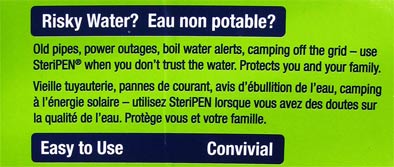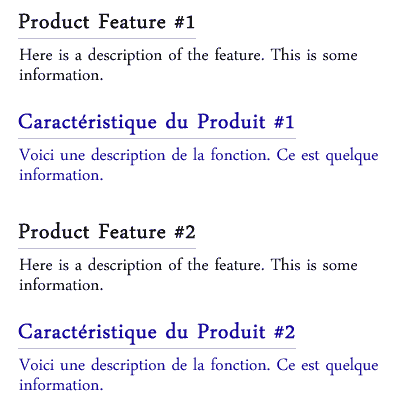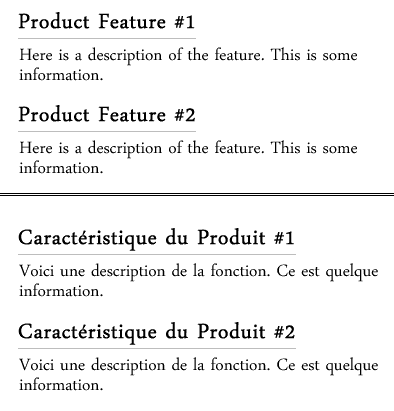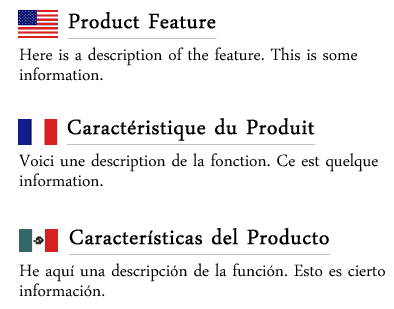Multilingual Packaging: Are You Talking to Me?
When companies ship their products internationally, they often include multiple languages in one package. Presumably this saves money and makes things easier on the business. This can be done effectively a few different ways. Unfortunately, many companies choose to just bundle all the languages together, switching from one language to the next without any warning to the reader.
When companies don't properly separate languages in their product instructions, it's essentially like doing a word search. And if you're not good with word searches, good luck putting together that new piece of furniture. It's going to look like a seventh grade wood shop project.
Here's an example of bundled languages:

This example doesn't even separate the languages onto different lines.
Ini nga exemplo wala nakapalayo sang mga hinambalan sa mga linia.
Have you ever been on the phone when the other person starts talking to someone else? It's confusing for a few seconds while you try make sense of it. Wouldn't it be helpful if the person somehow indicated that their comment was not part of your conversation?
 | "I'd like to take you to a new Italian restaurant I found." |
 | "That's disgusting." |
 | "What? You don't like Italian food?" |
 | "Sorry, I just found gum on my shoe. Dinner sounds great." |
To avoid the confusion that comes with switching languages unannounced, here are a few quick fixes:
1) Color Coding
Simply color code the different languages. Once you know the color of your preferred language, you can easily skip past the other text.

2) Language Grouping
Don't throw the languages all together in the same place. Easy enough.

3) Flag Labels
This works great on international websites. Why not use it on packages and product instructions too?

If you're ever involved in packaging a product that will be sold in multiple countries, please consider using one of these techniques. Customers notice when you make things just a little more convenient.


